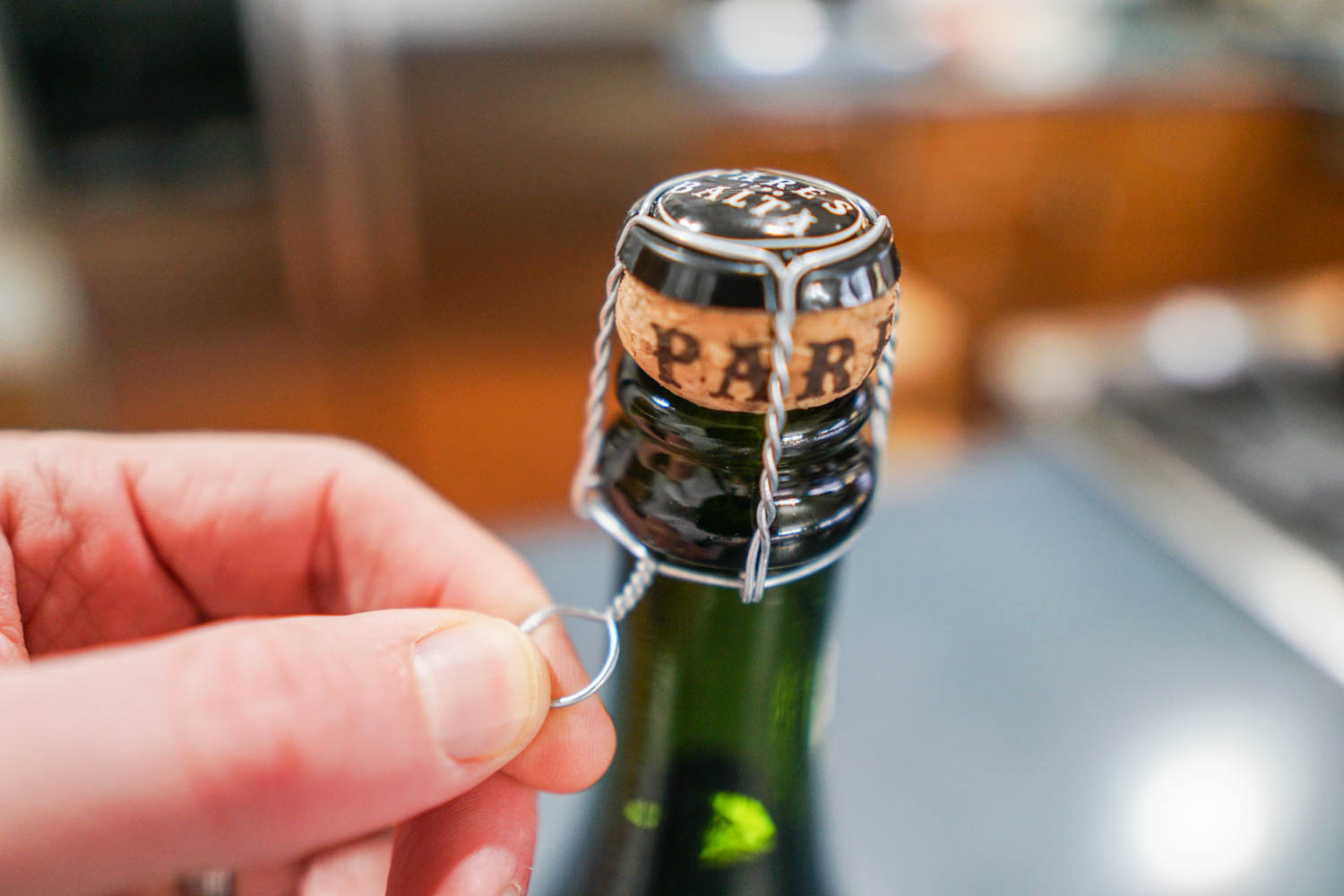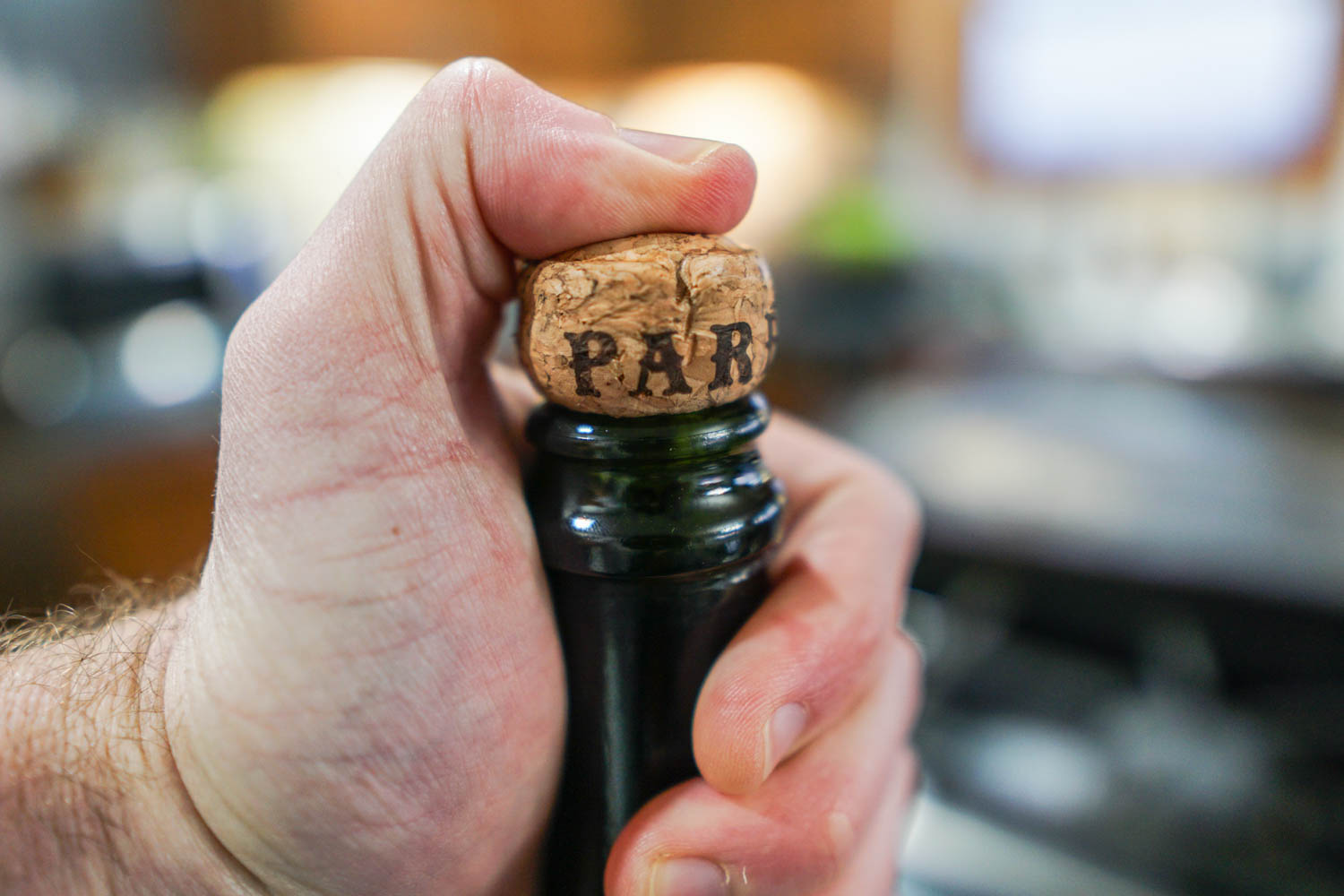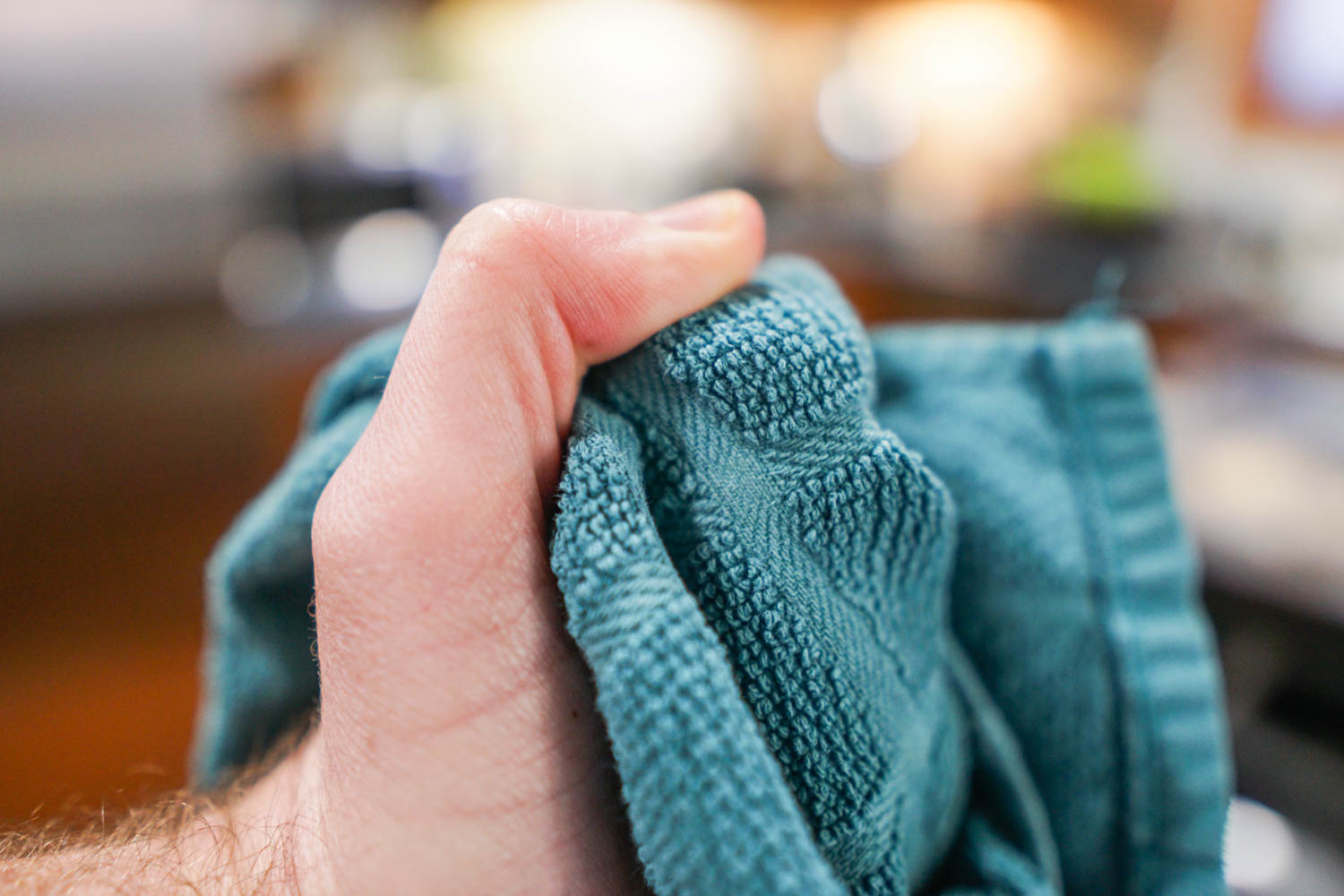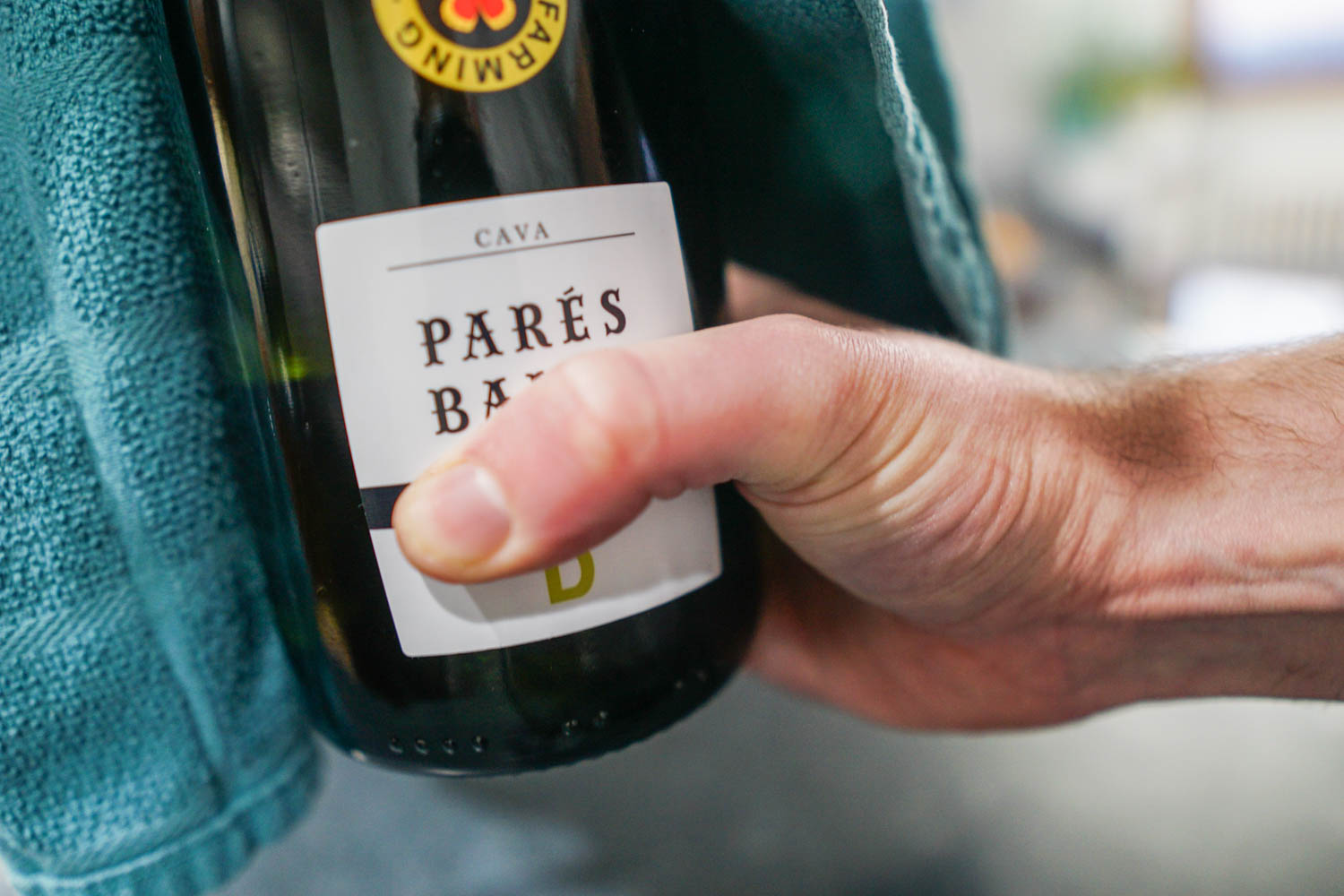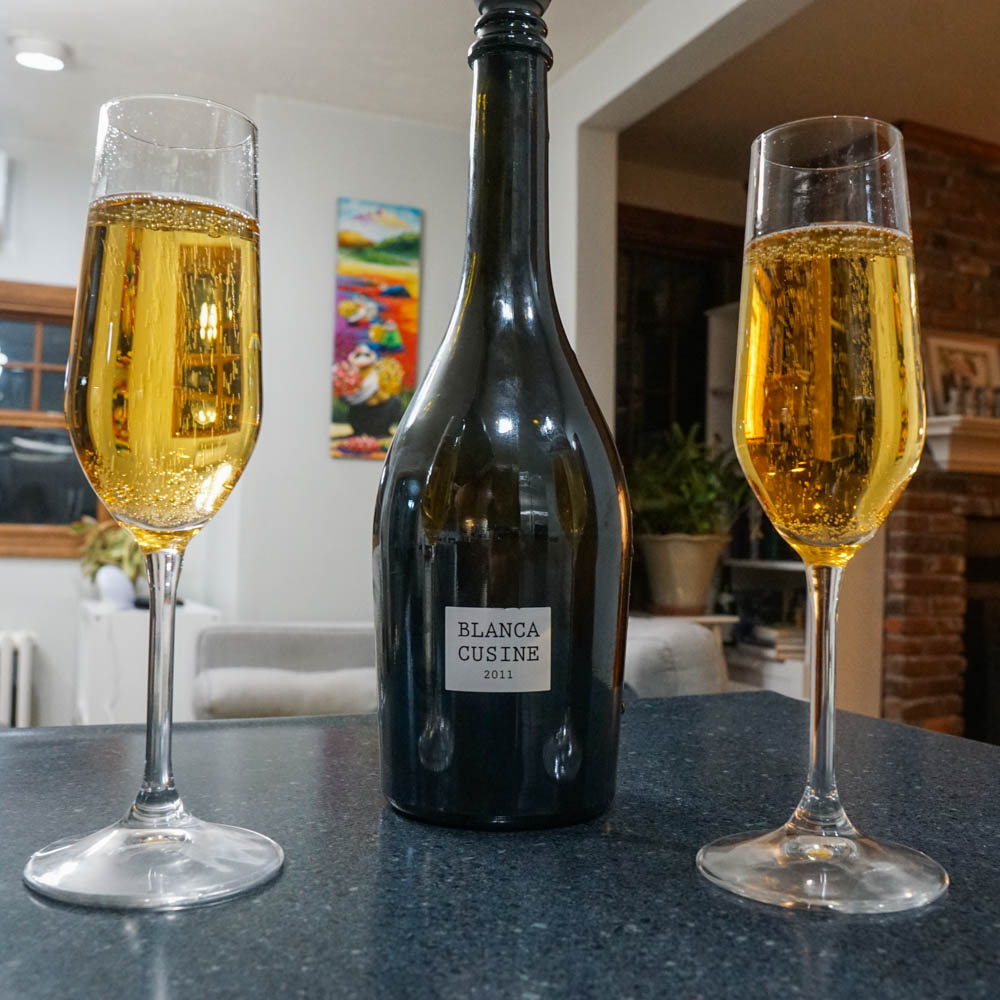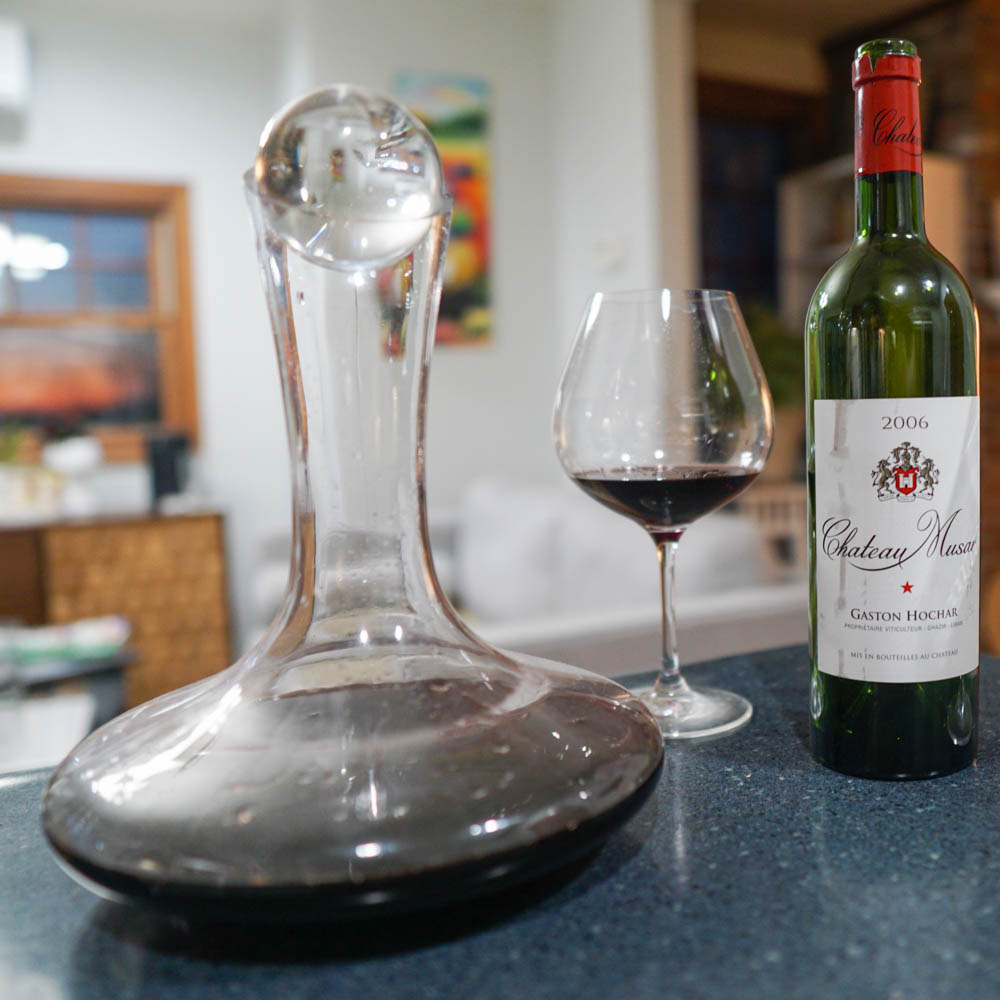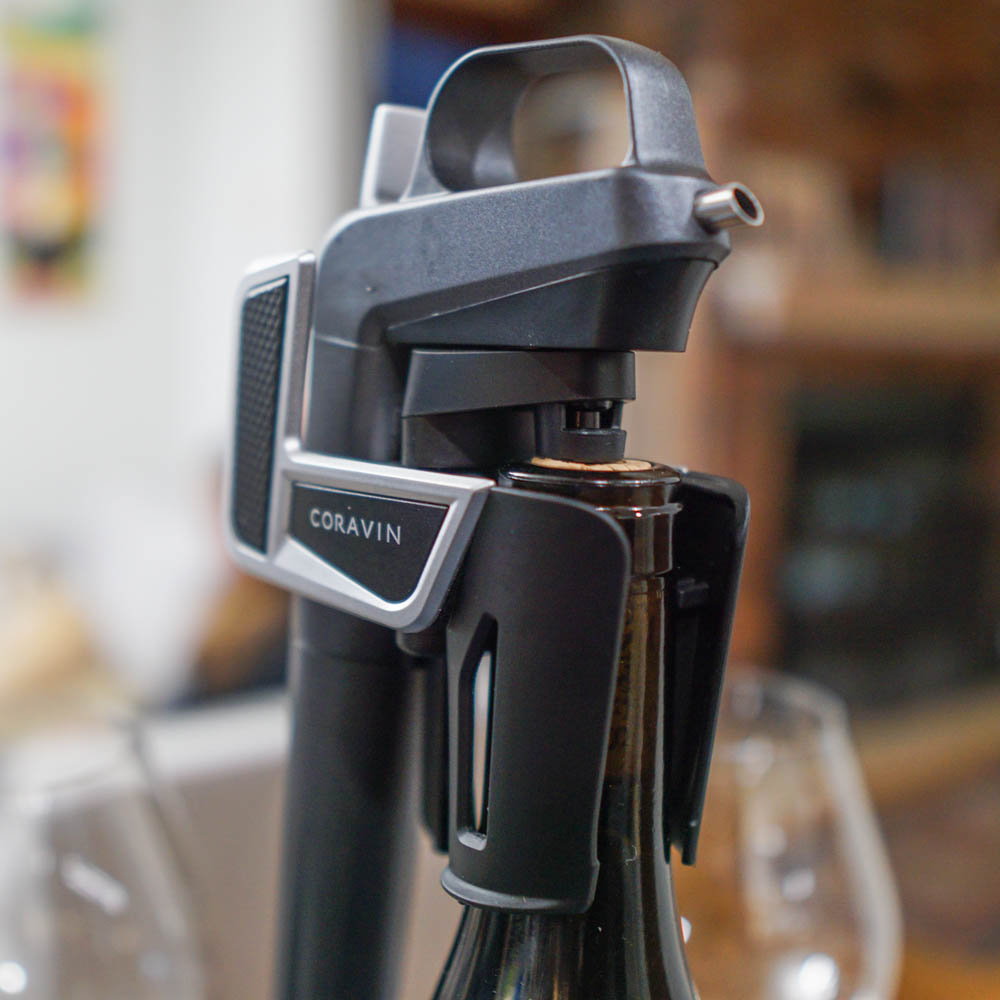Published by Jeremy.
Disclaimers: We use demographic data, email opt-ins, display advertising, and affiliate links to operate this site. Please review our Terms and Conditions for more information. This website is intended for those of legal drinking age in your jurisdiction.
When it comes to opening a bottle of wine, there are many unique corkscrews and techniques you can use to access your prized liquid. When it comes to opening sparkling wines (like Champagne or Cava), your options are much more limited.
The reason for this is because to open a bottle of Champagne, or any sparkling wine with a mushroom-shaped cap and wire cage covering, you often have to go manual by using your hands (although we've now seen some less effervescent bottles with screw-tops- this is still quite rare).
It may seem straight forward, but the technique you use matters a lot here. If you don't hold the Champagne cork properly, it could go shooting off into the distance- possibly hurting someone or breaking an item nearby. If you haven't chilled your sparkling well enough or agitate the bottle too much, the pressurized CO2 may release from the wine too quickly and result in a fountain of wine. This could also happen when pouring, too!
In this one, we want to help you get better with your technique in opening a bottle of sparkling wine because as we said, technique matters!
The Steps for How to Open Champagne Bottles
Prior to opening any bottle of sparkling, you must ensure it is well chilled. CO2 is more likely to stay in solution at lower temperatures (minimizing possible overflow upon opening), and a well-chilled bottle of sparkling wine simply tastes better- so keep that bottle in your refrigerator for a couple of hours prior to opening it up.
When you're ready to open your bottle of Champagne or other sparkling, you'll likely have to remove the wire cage that is securely wrapped around the cork. Standard cages feature a metal fastener that requires exactly six half turns to loosen (a fun fact we learned in our WSET Level 2 class).
As soon as the cage is removed, it is best to assume you are at risk for the cork popping out of the bottle at any time (on purpose, accident, or a mix of both)- so you'll want to place your hand securely on the cork at all times here as a precaution. At a minimum, your thumb should be placed firmly on the cap as in the picture above.
We personally think there is no reason why you should remove the wire cage off a bottle of sparkling wine unless you're just about to open it, and in fact some people won't even bother removing the cage at all- loosening is really all you need to do (although we tend to remove the cage outright).
No matter what you do, the time between loosening or removing the cage and opening should be minimal. When I go to open the bottle, I like to rest the palm of my hand to the top of the cork and wrap my fingers around the sides. This gives a fairly solid grip (on top and the sides) both for removal and in case of accidental early release.
No matter what happens, it is staying inside my hand.
From here, the proper technique for how to open a bottle of Champagne is not twisting the cork, but instead twisting the bottom of the bottle while holding the cork still. In being right-handed, we firmly hold the cork in our left hand per the above, angle the bottle at 30-45 degrees off vertical (pointing away from people or anything breakable), and twist the bottom with our right hand.
Some people may like to cover the cork with a towel before opening it. This could be for better gripping, added weight to prevent an errant cap flying across the room, or simply ensuring you have a towel on hand in case the wine fountains out of the bottle onto the closest surface (or maybe all three). We started doing this and once we got comfortable popping Champagne we started skipping this step.
Either way, from the moment you detect the smallest amount of movement in the cork, all twisting should be done with your right hand on the bottle itself.
The main reason for twisting the bottle is because if you twist the cork, you may not have a firm grip on it when it pops out. By holding the cork firm and twisting the bottle, you'll be (hopefully) preventing any errant corks from flying across the room when the bottle depressurizes as it opens. In fact, you may find the hand the cork is in pushing down on the cork ever-so-slightly in order to better control the speed at which it slides out of the bottle- we're looking for a gentle and controlled removal here.
We recognize that a lot of the above is a nuanced technique that is learned through experience. But no matter what you do, always keep the cork firmly secure in your hand once the wire cage is loose!
As you practice this, you get a better feel for when the cork is about to pop loose from the bottle. But for novices, you truly should expect that it could happen at any time (because, in all honesty, it really could). This is why we keep repeating the safety notes in this article- there are indeed risks in how to pop a champagne bottle!
Once the cork is safely removed, we can generally bring the bottle back to a vertical position and set it down on a counter just fine; however, there is no guarantee that a clean open won't result in wine gushing out of the bottle a second or two later. There are many cases where a bottle could have ample CO2 built up that could be released (even with a clean open). As such, we always like to have our Champagne flutes or Cava glasses right next to the wine just in case and only open sparkling wine someplace that is easy to clean.
Spills happen, and it is best to minimize your losses by having the glass available and a towel at the ready for clean-up.
How to Pour a Glass of Champagne
When pouring Champagne, you need to treat it like pouring a beer. Lots of bubbles are generated when you pour sparkling wine, so it is best practice to turn your glass at a 30-45 degree angle from vertical (just like you did with the bottle) and gently pour the sparkling wine in such that it minimizes the amount of CO2 that is released (pouring into a vertical glass is too turbulent and will release more bubbles- just like with beer).
Generally speaking, your first pour of sparkling wine will likely only fill 25-50% of the glass level with liquid before the CO2 bubbles rise up and reach the top. Pour any more, and you may overflow and create a mess (another skill that comes with experience). As such, you'll likely need to do two passes in each glass- once for the initial pour and a second for a top off to bring the glass to a respectable level (we like ~10%-20% from the top). So work in a circle around all the glasses you need to fill once, then repeat a second or even third time as needed.
As mentioned several times in this article, opening a bottle of Champagne properly is a skill that you'll develop over time. Even in applying all the steps in this guide, you could still see a bottle overflowing simply through no fault of your own.
When in doubt, keep two general rules in mind: once the wire cage is loose or removed the cork needs secured by your hand at all times and twist the bottle from the bottom when removing the cork.
Do these, and you'll be well on your way to safely opening a bottle of Champagne!
Do you have a different technique for opening a bottle of sparkling wine? Comment below to share!
Upgrade Your Home Wine Bar
Need to upgrade your wine bar? Grab some new wine accessories:


